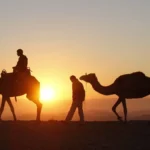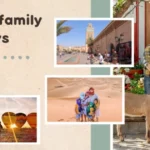
The Moroccan mint tea ceremony is one of the most recognized and celebrated in the West, along with the Chinese and Japanese ceremonies. It is a custom that in some parts of Spain has already become part of the landscape and of the obligatory weekend appointments. In the Arabic-style tea shops, it is possible to enjoy this ritual without the need to travel.
How is Moroccan Mint Tea or Moorish Tea prepared?
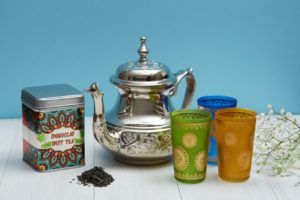 Moroccan tea or Moorish tea is a mixture of Chinese green tea (usually Gunpowder or Chun Mee), fresh mint leaves, and lots of sugar. In Arabic it is called شاي بالنعناع – shāy bi l-na`anā` or simply, Shay.
Moroccan tea or Moorish tea is a mixture of Chinese green tea (usually Gunpowder or Chun Mee), fresh mint leaves, and lots of sugar. In Arabic it is called شاي بالنعناع – shāy bi l-na`anā` or simply, Shay.
Donkeys are often seen in the streets carrying freshly cut mint, and the sugar comes compressed into solid cones about 20 to 30 cm high, which those who prepare the tea break with small hammers to separate the necessary amount.
Moroccan tea is bitter, since it is prepared with boiling water, and sometimes they even boil the leaves for a few minutes over the fire, as a decoction. At the same time, it is a very sweet drink, since to counteract the bitterness generated in the preparation, a large amount of sugar is added.
But the star of Moorish tea is mint. We cannot make a good Moroccan mint tea without a bunch of fresh mints, peppermint, or peperino.
Moroccan Tea Ingredients
To make a typical Moroccan tea you should have:
- Chinese green tea in loose leaves (gunpowder or Chun mee)
- Fresh mint leaves (cut off the longest stems)
- White sugar in lumps or loose
- Hot water
Moroccan Tea Ceremony Utensils

The tea is prepared on a metal tray, in teapots also made of metal, often stainless steel alloys, others, silver teapots in which boiling water is poured, or placed directly on the fire. Once the tea is prepared in the teapot, it is served in colored glass cups, which give a very picturesque aspect to the ceremony.
Tea Culture in Morocco
Tea in Morocco is part of the culture. Drinking tea there is a daily and popular custom. Everyone drinks tea in Morocco, and with a special style, that’s why they call it “Berber whiskey”. The Berbers are the people who inhabit the south of Morocco and other countries of the Maghreb, North Africa, and are one of the original ethnic groups of the place. They are desert and mountain people. They have eyes of a luminous green color that contrasts with their tanned skin tone.
Tea in Arabic is called shāy. It is drunk as a sign of friendship and offered as a courtesy before doing business or at social gatherings. Refusing a cup of tea is considered disrespectful and impolite.
If you go to Morocco, be sure to accept the small cups of hot tea offered in every store, because besides being a gesture of hospitality, it is super tasty!!!!
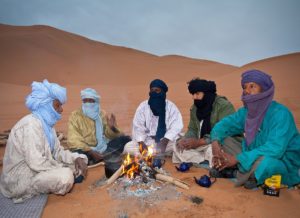
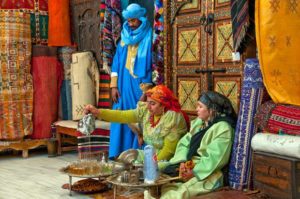
History of Tea in Morocco
It is said that during the XVII and XVIII centuries tea began to appear in Morocco by the hand of European diplomats who carried boxes of this infusion as a gift for the King of this country. But there is a record that tea was introduced commercially by the English, who in the middle of the 19th century brought to the port of Tangier a shipment of Chinese green tea, whose original destination was the countries of the Baltic Sea, but due to the Crimean War, they had to look for a new port. The Moroccans immediately took a liking to the drink.
What is the Moroccan Mint Tea Ceremony?
The Moroccan mint tea ceremony is a ritual that developed over the years in this beautiful North African country. When I traveled to Morocco to learn about this ceremony, I was told different stories about how the ritual began.
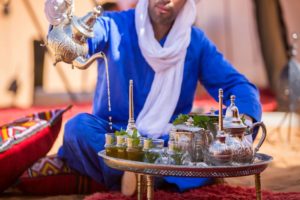
In the cities of the south of the country, the Berber population increases in proportion to that of the ethnic group coming from Arabia. The Berbers are known as the “people of the desert” because they have inhabited this part of the Maghreb for, it is believed, thousands of years.
Their houses are constructions of stone and mud, and many times they are dug in the earth, like caves with only one exit to the outside. As they inhabit the desert, they often get their drinking water from wells of dubious salubrity. This is how they began to boil the water to make it more suitable for consumption.
To give it a more pleasant taste, they sometimes added herbs such as mint or peppermint, other times they added spices such as cardamom or cinnamon, and also orange blossoms. With the arrival of tea and sugar by the Europeans, this hot water with mint became tea with mint and sugar.
Tea Ceremony in the Desert
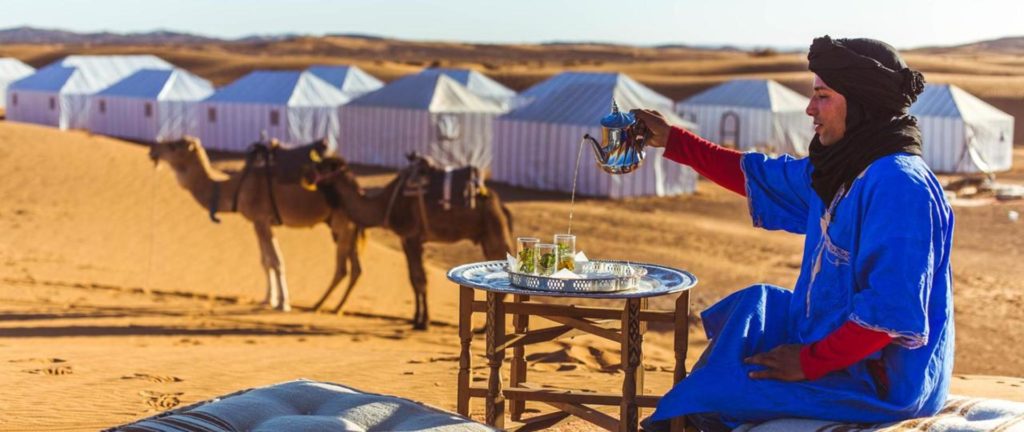
It is said that in the desert, the groups of trekkers who led the trade caravans to Timbuktu on the trans-Saharan route, and to other coastal and Levantine cities, rested in cloth tents called Khaimah, which provide protection from the cold (and from the animals and evil spirits that inhabit the sands).
They sat in a circle around the fire in the tents, telling stories about the desert and drinking tea.
Other ways to prepare Arabian tea
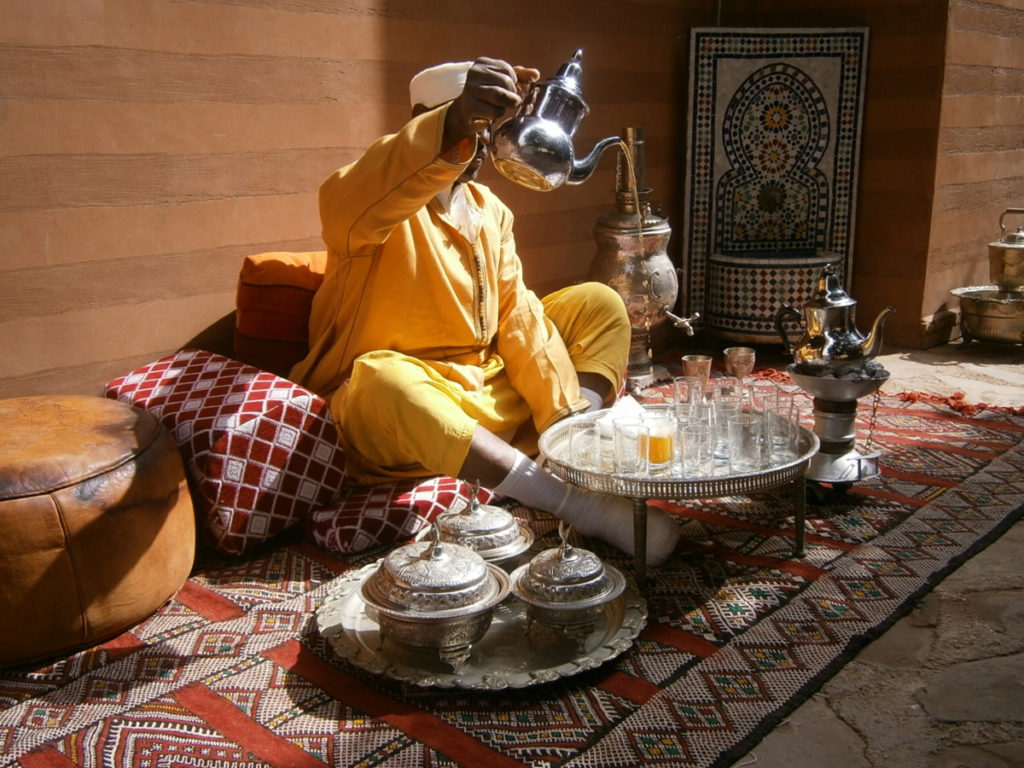
In some corners of the Maghreb and the Levant, there are variations in the preparation and serving of tea. In Tunisia, for example, in addition to mint, they add a few pine nuts that give it a very special flavor.
In Turkey, they drink black tea with apple or simply apple infusion, while in Egypt they like a lot of hibiscus infusion (Karkadé or Karkaday). In the villages closer to the Mediterranean, a small splash of orange blossom water or rose water is added, achieving an intoxicating aroma?
If you haven’t tried it yet, come to the Club and we will accompany you to discover it!

